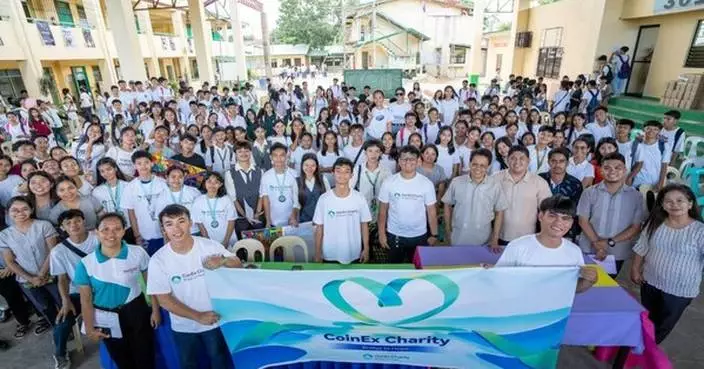BEIJING, Nov. 29, 2024 /PRNewswire/ -- A report from China Daily:
A museum collecting and exhibiting cultural relics representing one of the greatest archaeological discoveries over the past decades in China opened earlier this month in the Shanxi county of Xiangfen.
The Taosi Site Museum, which opened to the public on Nov 11, was built near the Taosi relics site in Xiangfen. It is aimed to showcase a civilization dating back to 3,900 to 4,300 years ago.
The Taosi site was discovered in 1958 and a large archaeological excavation began in 1978. Over the years, an urban settlement, a palace enclosure, a storage zone, cemeteries and an observatory altar have been excavated. Researchers believe the site was most likely the ruins of the capital city during the period of Yao — a sage emperor dating back to more than 4,100 years ago.
More than 5,500 pieces or sets of cultural relics have been unearthed at the Taosi site, giving researchers adequate material evidence to understand how the earliest Chinese society and nation were formed.
Among the discovered cultural relics, a total of 230 pieces showing the culture and life of ancient inhabitants are on display at the museum, including items of pottery, jade, stone and copper. The museum also exhibits relics that some scholars speculate may be related to astronomical observation and timekeeping.
The museum is part of the Taosi Archaeological Site Park, which also includes an exhibition hall for ancient astronomy and a facility for the preservation of the bulk of the discovered relics. The museum now features such functions as the exhibition of relics, research and education.
Among the exhibits, a gnomon shadow measurement tool called guibiao, a colored pottery plate with a curled dragon pattern and a flat pottery kettle with red-inked inscriptions, are the most valuable assets of the museum and worth the attention from visitors, according to Gao Jiangtao, head of the archaeological team for the Taosi ruins.
He said the colored pottery plate with a dragon pattern might point to the origin of the Chinese totem of dragon, and the red pictographic characters inscribed on the flat pottery kettle might be the earliest written language in China.
The guibiao gnomon shadow measurement tool is a part of an ancient observatory discovered at the Taosi ruins. Archaeologists believe this is the earliest observatory known in China.
** The press release content is from PR Newswire. Bastille Post is not involved in its creation. **

Museum showcases Shanxi's ancient heritage
TAIPEI, Nov. 29, 2024 /PRNewswire/ -- Taiwan External Trade Development Council (TAITRA) is unveiling several case studies to illustrate how Taiwan's materials science industry is making the global fashion and beauty industries more sustainable with breakthrough innovations.
For assistance finding and collaborating with Taiwan's leading innovators, please visit: https://en.innovation.taitra.org.tw/suppliers
Or email: IndustryMarketingTeam@taitra.org.tw
Weaving sustainability into the fashion industry
According to Retail Asia, 87% of consumers from emerging markets in Asia aim to make their lifestyles more sustainable. To help clothing brands meet this growing demand, Taiwan's chemical solutions providers for textile supplies are innovating to develop new fabric materials. The company WWRC stands out in particular for its ingenuity in creating multi-functional fabrics for diverse wearing experiences that embrace circularity and resource conservation.
For example, WWRC integrates its Polygiene Technology into a number of fabrics to inhibit the growth of microbes, effectively reducing wash frequency and thereby conserving water and energy. The company also offers a biodegradable material called OrganoTex.
Known for supplying high-quality fabrics to internationally recognized sports brands, WWRC's innovations help set trends for sustainable fashion while delivering comfort and durability. The company's focus on sustainability covers raw materials, production processes, and redefining the lifespans of textiles.
Expanding plant-based raw materials in cosmetics
In the cosmetics industry, consumers in Asia are increasingly seeking plant-based beauty products. To harness this trend, Taiwan's suppliers of raw cosmetics materials, such as Taiwan New Daily Chemical Co., Ltd. (TNJC), are aiming for materials sourced from 100% natural sources. Using plants from traditions such as Traditional Chinese Medicine (TCM), TNJC leverages advanced extraction technology to prepare raw materials with highly active ingredients for a wide range of cosmetic and personal care products. The company has even collaborated with a Japanese research institute and a Malaysian production company to jointly develop natural cosmetic materials.
To build its values into its operations, TNJC has certifications according to ISO 9000 and ISO 9001 standards, and its factory is certified according to ISO 45001 for safety and health management.
A key partner worldwide
Across its industries, Taiwan's business community has several advantages to offer:
Helping international buyers access the best of Taiwan
When searching for a supplier or partner overseas, companies often struggle with finding a suitable company that is trustworthy and reliable, and then communication can pose additional challenges. To accelerate this process and foster impactful synergies, TAITRA serves as a resource and facilitates collaborating with the island's most unique, forward-looking startups and enterprises.
The organization solves the pain points of international buyers with the following services:
To ensure buyers collaborate with high-integrity businesses, TAITRA has established real-time, borderless services through a comprehensive trade network of over 60 overseas offices in more than 40 countries worldwide, and the organization holds cooperation agreements with over 500 international trade-related sister organizations.
** The press release content is from PR Newswire. Bastille Post is not involved in its creation. **

Driving Sustainability in Fashion and Beauty with Taiwan's Materials Innovations











